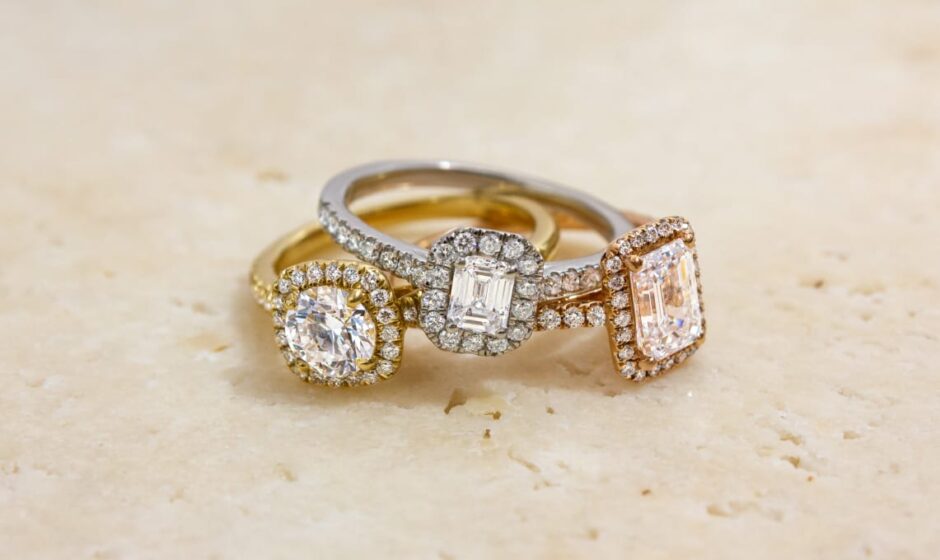Undesigned lab grown diamonds have emerged as a norm in the recent past, thus offering an ethical and environment friendly solution to mined diamonds. But today these diamonds are every bit as beautiful, bright, and hard as those mined from the earth and cost far less. Here in this article let me introduce you with all the aspects of loose lab grown diamonds you should know ranging from how they are created all the way to why many are advising people to purchase them.
What are Loose Lab Grown Diamonds?
Loose lab grown diamonds, named so, are the stones that are cultured in a laboratory as opposed to being organically mined from the surface of the earth. Such diamonds are created through the state of art cutting techniques that imitate the natural diamond formation procedures. The end product is flawless and has the same composition, properties, as well as characteristics of an earth mined diamond. Loose lab grown diamonds are not imitations such as cubic zirconia or moissanite but diamond with constituent molecules mainly carbon atoms in crystal lattice configuration.
Diamonds grown in the lab are utilized in an almost similar way as other natural diamonds diamond synthesis takes place under high pressure and temperature hence the name high injector pressure high thermal temperature lab diamonds UR, UR well defined UR well defined With this success of HPHT technology, lab grown diamonds are used in a similar way as any other natural diamond Although lab grown diamonds are produced by a process that emulates geological conditions, they are still
How Are Lab Grown Diamonds Created?
There are two primary methods used to create loose lab grown diamonds:
- High Pressure, High Temperature (HPHT): Here carbon is made to undergo a process of high pressure and temperature much like the conditions that naturally obtain in the formation of natural diamond. HPHT diamonds exhibit desirable characteristics of clarity and brilliance to superior levels compared to other comparably classified mined diamonds.
- Chemical Vapor Deposition (CVD): It occurs by reducing a carbon containing gas like methane in a high vacuum pressure environment. The carbon atoms then aggregate on a diamond seed and continue building the diamond layer by layer laminar. CVD diamonds are versatile in a way that allows them to be cut into different sizes, shapes and with different quality.
The two techniques offer excellent quality gemstones, which are identical to those mined in terms of appearance.
Lessons on purchasing loose lab grown diamond
Similar to the natural ore diamond, cut, clarity, color and carat weight are important factors to consider when choosing a lab created diamond.
- Cut: The cut of a diamond determines whether the stone will reflect or not or not. And the shape or cut of the diamond, natural or synthetic will always shine when cut well.
- Clarity: Because of their production process, lab grown diamonds are typically less included than natural diamonds and thus have higher clarity grade.
- Color: The diamond is graded from D (as in no color at all, totally clear) to Z (slightly yellow or brown). Nearly all lab grown diamonds are nearly colorless and difficult to tell apart from an ideal sliced natural diamond in terms of clarity.
- Carat Weight: Carat weight in diamond is connected with the size of diamond which in turn means the weight of diamond. Because lab grown diamonds are costlier, the buyer may go for a larger diamond without straining his pocket.
Loose Lab Grown Diamonds Compared to Natural Ones
While lab grown and natural diamonds are virtually identical in appearance and composition, there are some key differences:
- Origin: Natural diamonds take millions of years to be produced within the earth’s surface while loose lab grown diamonds can be produced within weeks in a controlled laboratory.
- Price: Reminded above, lab grown diamonds cost far less money, thus bringing more benefits to purchasing products at a lower price.
- Environmental and Ethical Impact: Mined diamonds are associated with a very high degree of negative social and environmental impact compared with lab grown diamonds.
- Certification: Similar to natural diamonds, Lab grown diamonds are assessed and awarded a grade and certificate from well-recognized institutions such as GIA or IGI. These certificates afford some guarantee as to the quality and, indeed, the genuineness of the diamond.
Conclusion
Loose lab grown diamonds are ideal for anyone looking for a brilliant diamond that is equally affordable and is sustainable. Having come of age, lab grown diamonds are as close to natural diamonds as possible and in terms of brilliance and hardness they are the same. They are cheaper, less damaging to the environment, and do not involve conflict, which distinguishes contemporary buyers who crave both comfort and clear conscience.
Visit celebrating chilaquiles for more informative news.



